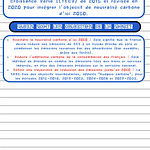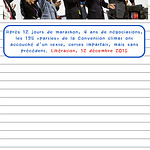Focuses on loops, not a dead end: In a circular economy, the goal is to keep materials and products in use for as long as possible. This involves activities like repairing, refurbishing, remanufacturing, and recycling.
Reduces waste and pollution: By keeping things in circulation, the circular economy aims to minimize what gets thrown away and reduces the environmental impact of production.
Extends product lifecycles: Products are designed and manufactured with the intention of being repairable, reusable, or recyclable from the very beginning.
Regenerative by design: The circular economy takes inspiration from nature, where resources are constantly cycled and reused.
Here are some of the key principles of a circular economy:
Eliminate waste and pollution: The ideal scenario is to design products that create no waste or pollution in the first place.
Circulate products and materials (at their highest value): This involves keeping products in use for as long as possible and recovering materials to create new products when a product reaches the end of its lifespan.
Regenerate nature: A circular economy goes beyond just minimizing waste. It also aims to restore and improve natural resources.
The circular economy offers a number of potential benefits, including:
Reduced environmental impact: By conserving resources and minimizing waste, the circular economy can help address climate change, pollution, and habitat loss.
Economic benefits: The circular economy can create new jobs in areas like repair, reuse, and remanufacturing. It can also lead to cost savings for businesses by reducing their reliance on virgin materials.
Improved resource security: As resources become more scarce, the circular economy offers a way to ensure a steady supply of materials for businesses.
There are a number of challenges associated with implementing a circular economy, such as:
Changing consumer behavior: Consumers need to be encouraged to buy durable, repairable products and to avoid disposables.
Designing for circularity: Products need to be designed to be easily repaired, reused, or recycled.
Policy and infrastructure: Government policies and infrastructure investments are needed to support the circular economy.
The circular economy is a growing movement that has the potential to transform the way we produce and consume goods. By moving away from the traditional linear model, we can create a more sustainable and resilient future.













Share this post